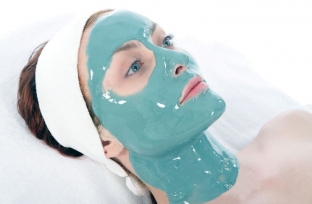In professional beauty care, face masks occupy a key place, and this is not surprising, since they are able to have a visible express effect on the skin. The strong and quick effect of a professional face mask lies in the fact that the cosmetologist can combine the composition and concentration of active ingredients, the time and method of their action, and the result will be visible after the first procedure. Read about the types of face masks and their possibilities at estet-portal.com.
Mechanisms of action of the face mask and active components
The leadership in the use of cosmetic facial masks is traditionally attributed to the Egyptians, who preserved in written sources information about the use of vegetable juices and extracts, eggs and river silt for skin rejuvenation. Later sources from different nations give information about the use of animal and vegetable fat, bran and flour, milk, fresh vegetables and fruits for cosmetic purposes.
Some of the features of a long-standing cosmetic experience have passed into our time. Despite the fact that a modern cosmetic face mask is a complex combination of many chemical ingredients, it usually consists of two parts – bases and active active ingredients. The base can be white clay and zinc oxide, flour or starch, wax or lanolin, algae, mud, silicone.
Aluminum salts – to tighten pores, camphor – for a refreshing action, moisturizing and soothing, tonic substances.
The active elements that make up the face mask determine its purpose:
- nutritious – provides the skin with the necessary elements, improves tone, improves color;
- cleansing – includes components that provide an absorbent or degreasing effect, open pores, remove the stratum corneum of the epidermis;
- moisturizing – prevents dehydration of the skin, used for intensive moisture supply;
- rejuvenating – has a lifting effect, tones and improves skin elasticity, fights skin flabbiness and fine wrinkles.
Masks can also have a narrower purpose – anti-inflammatory, whitening, anti-couperose, etc. Masks can be combined to achieve the desired effect.
If it is necessary to solve a skin problem for which there is no suitable mask, use a paraffin mask, which contains the desired active substance.
Such a mask does not have an independent effect on the skin, but softens it and enhances blood circulation in it, stimulating the penetration of the biologically active ingredient necessary for the skin.

Face masks and their types depending on the composition
All face masks can be roughly divided into groups – depending on the composition of their ingredients.
Gel-like. They give a quick effect, because they do not penetrate deep into the skin. They have a softening effect. Used for oily skin, as they usually contain algae extracts that can have an anti-inflammatory effect, remove shine, tighten pores.
Creamy. There are cleansing (dry on the skin) and nourishing (do not dry on the skin). The mask is usually applied to the face for 20 minutes, then the unabsorbed part is removed with a tissue.
Liquid. They have a tightening, rejuvenating effect, are applied in an even layer. They include hydrophilic colloids, which, when dried, create a tightening film on the skin that does not allow water to pass through. After removal, the skin looks hydrated and smoothed.
Pasty. Contain kaolin, talc, dirt, moisture-retaining glycerin. They have a cleansing and moisturizing, lifting effect. Apply to the skin with a brush for 10 minutes, make sure that the mask does not completely harden.
Powder. Most often they contain mud, algae, Dead Sea salts. They have a calming, tonic effect. Masks can be diluted to a comfortable consistency, applied to the skin in a thick layer.
The effect of the mask can be enhanced depending on the thickness of the application, the temperature of the mask, the duration of the mask on the skin.









Add a comment